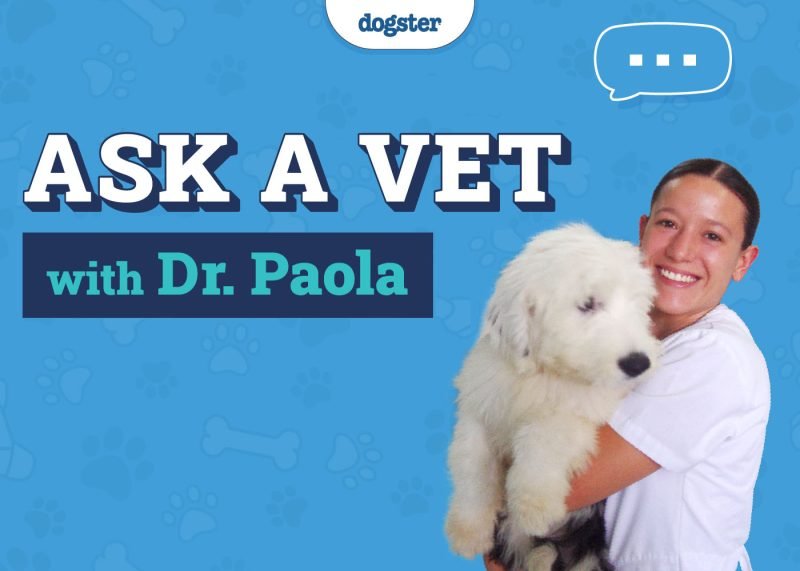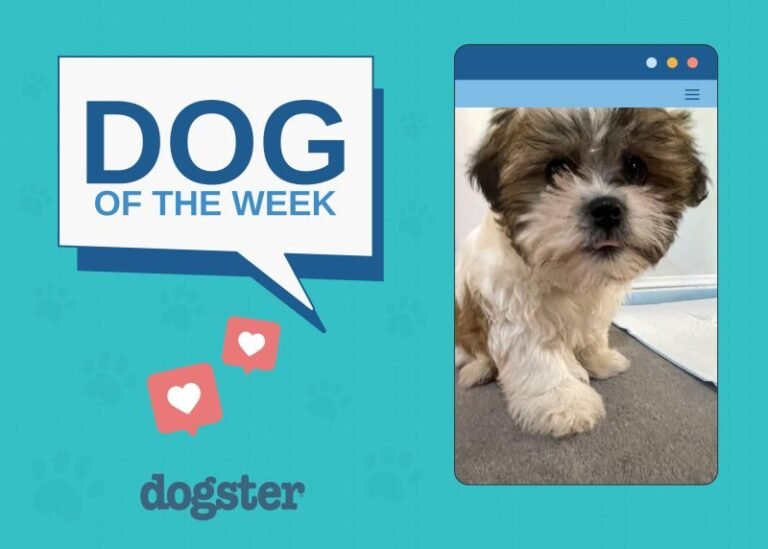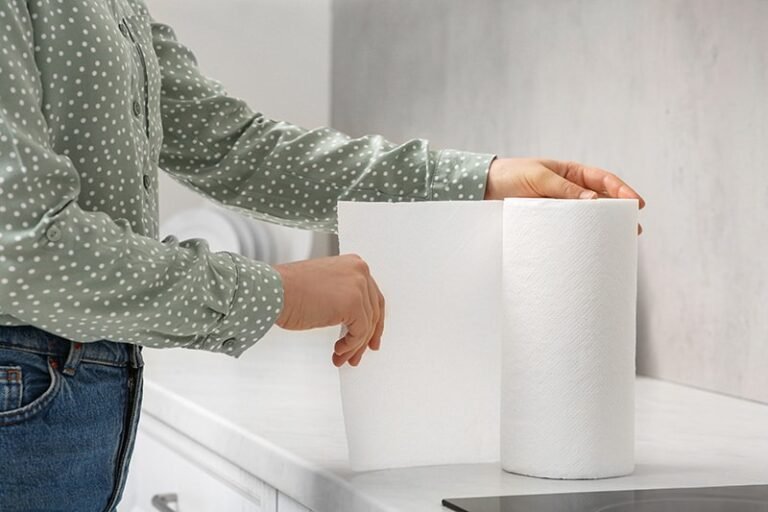

Welcome to our “Ask Dr. Paola” series, where every Monday we bring expert advice straight from Dr. Paola Cuevas (MVZ) to help our readers better understand their dog’s health and well-being.
Whether you’re a new pet parent or a seasoned dog lover, Dr. Paola is here to provide answers to your most pressing questions. From nutrition tips and preventive care to troubleshooting common behavioral issues, Dr. Paola is ready to offer insights that will keep your furry friend happy and healthy. Stay tuned for expert guidance on a range of topics that matter most to you and your dog, so you can make informed decisions and provide the best possible care for your canine companion. Have a question? Send it in here!

Help! How Do I Know When “It’s Time”!
“My dog Freckeles has 2 very large mammary gland tumors and is 14 years old. She is still eating and drinking and can go to the toilet. She is also still bright and alert. I would like to know if I should consider putting her to sleep.“– Gerard
Hi Gerard,
I can only imagine how difficult this situation feels. Making end-of-life decisions for a beloved companion like Freckeles is never simple. The presence of large mammary gland tumors in an older dog can be concerning, especially at her age, but the most important consideration is her overall comfort and quality of life rather than the size of the masses alone. If she is still eating, drinking, interacting with you, and able to move around to relieve herself without distress, these are encouraging signs that she continues to find joy and comfort in her daily life.
However, it is essential to monitor for any signs of pain, infection, or decline. This can include changes in breathing, reduced mobility, loss of appetite, withdrawal from interaction, open or ulcerated tumors with odor or discharge, or visible discomfort when touched or moving. A veterinarian can help you objectively assess Freckeles’ quality of life using established tools such as the HHHHHMM scale (Hurt, Hunger, Hydration, Hygiene, Happiness, Mobility, and More good days than bad).
You clearly love Freckeles deeply, and that love is guiding you to do what is kindest for her. If she is still comfortable, you can continue to provide palliative care and focus on keeping her pain-free and happy. When the balance begins to shift and comfort can no longer be maintained, humane euthanasia becomes an act of compassion rather than loss.
Sincerly,
– Dr. Paola

If you want real time answers to your questions, you can talk to one of our veterinarians online. Click on the image or button below:


Help! My Doodle Has a Limp!
“Hi Dr. Paola,
We have a standard Goldendoodle, Cooper, the best, sweetest dog ever. Lately, he’s been having a limp in his hind joint. Do Goldendoodles tend to have joint issues? Do we need to be giving him glucosamine or some supplement? What are the best glucosamine supplements on the market, if needed? “ – JK
Hi JK,
It sounds like Cooper brings a lot of joy into your life, and it is understandable to be concerned when you notice changes in his mobility. Standard Goldendoodles, being a mix of Golden Retriever and Poodle, can inherit a predisposition to joint issues such as hip or elbow dysplasia and degenerative joint disease. These conditions are relatively common in medium and large breeds because of their rapid growth and genetic background. A consistent limp in a hind limb warrants a physical examination and possibly radiographs, since early detection of structural or degenerative problems can make a significant difference in management and comfort.
Glucosamine and chondroitin sulfate supplements can support cartilage health and joint lubrication, though the scientific evidence is somewhat mixed. Some studies show mild to moderate improvements in mobility and comfort in dogs with osteoarthritis, while others find limited measurable benefit. These supplements are generally safe when sourced from reputable veterinary brands. Products such as Dasuquin, Cosequin, or GlycoFlex are among the most widely studied and quality-controlled formulations. If you decide to start Cooper on one, it is best done under veterinary guidance to ensure the correct dosage and to monitor for response.
Beyond supplements, maintaining a lean body condition, ensuring moderate low-impact exercise like swimming or leash walks on soft ground, and addressing pain or inflammation with appropriate veterinary-prescribed medication will have the greatest impact on Cooper’s long-term comfort and mobility.
Best,
– Dr. Paola

Help! I Think My Dog Is Having Episodes of Unsteady Gait!
“Lizzie is a 5-month-old lemon beagle. She’s had 2 episodes of what appears to be “unsteady gait,” swaggering side to side. Her pupils are neither fixed nor dilated. These episodes have happened twice, and they are accompanied by urinary incontinence. Both times, she has still stayed playful. When I noticed she was swaggering, I’d go to check on her and she’d take off running, playfully. She’d be herself in the morning. She is going to the vet next week.” – Cynthia
Hi Cynthia,
It is great that Lizzie is already scheduled for a veterinary visit, because intermittent unsteadiness combined with urinary incontinence deserves careful evaluation, even though she seems playful and recovers quickly. In a young puppy, short episodes of an unsteady gait or “swaggering” can have several potential causes, ranging from benign to more significant. These include transient drops in blood glucose, which is a risk in small or very active puppies, inner ear disturbances affecting balance, mild toxic exposures, or, less commonly, neurological conditions such as seizures or congenital cerebellar or vestibular issues. The fact that she remains alert, playful, and responsive during and after the episodes is reassuring, but it still warrants investigation to rule out metabolic or neurological causes.
Your veterinarian will likely perform a thorough physical and neurological examination, check her glucose levels, and possibly run blood work or urinalysis to evaluate her kidney and liver function. If these events recur or change in character before her appointment, keeping a brief video of an episode can be very helpful for the veterinary team, as it allows them to observe her gait and behavior in real time. For now, continue to ensure she stays well hydrated, eats regularly, and avoids any potential toxins or medications not prescribed for her. With a full examination and any needed tests, your veterinarian will be able to determine whether this is a passing issue or something requiring further management. Congratulations on being proactive with Lizzie’s care!
– Dr. Paola
- View past week’s questions here: November 3, 2025
- See our full list of past articles here
- Click here to submit a question
- Get Dr. Paola’s weekly advice sent straight to your inbox. Sign up below!


